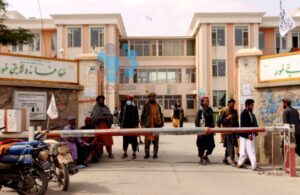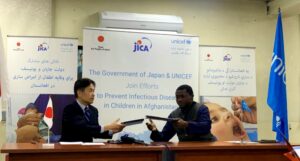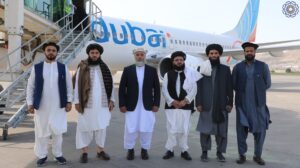MONITORING (SW) – The Afghanistan Analysts Network has said in a fresh report that the current crisis in Afghanistan is not a matter of assisting vulnerable groups so they can be tided over until things get better, but of the economic system collapsing.
The AAN said it is dispiriting to see the slow and continuous slide into greater debt afflicting so many of the individual households and the ways in which many of the businessmen are forced either to spend, sell or simply lose what was – and still should be – productive capital.
The longer this economic crisis lasts, the fewer resources Afghanistan’s businesses and households will have to pick themselves up again, with the risk that some of the damage will be irreversible. Even Afghans’ famed resilience has its limits, given the cascade of crises they face, it warned.
According to the report, it has been said before, but it bears repeating: This is not an economic crisis that has mainly hit the poor and the vulnerable and it cannot be addressed by emergency food aid alone. At its most basic level, the economy needs its cash to flow again – salaries, bank assets, remittances – as soon as possible.
In this third instalment of ‘Living in a Collapsed Economy,’ the AAN returned to the people it interviewed at the beginning of winter to find out how they had managed since we last spoke to them, especially during the harsh winter months.
For many of them, not much had changed, although their situation had slowly worsened as they continued to need to spend money they did not have. Some had been hit hard, while others found their situation somewhat improved after they found a job or were paid their salaries.
Several people had family members who had died. Yet, despite the dispiriting hardship, most interviewees showed a remarkable determination to keep going and take care of their families and, often, wider communities.
Many had received some form of food aid, which was much appreciated and provided a brief, but much needed relief. With its more than thirty interviews, quoted below, this report provides a detailed and layered picture of the many ways Afghanistan’s economic collapse is affecting families and businesses. It once again underscores that Afghanistan needs more than humanitarian aid to restart its economy.
At the end of 2021, between mid-November and mid-December, the AAN team interviewed close to forty people across Afghanistan. They asked them in-depth questions about their household’s economy: How many people in the household had an income? How much money was coming in and what were they spending it on? Had they had to borrow money or sell things they owned? Were there things they could no longer afford? What were they eating? Had they received any aid and had they been able to help anyone themselves?
The conversations were frank and often poignant and showed how the economic collapse has affected practically everyone, whether they had previously been wealthy, middle class or poor and already living precarious lives.
Eleven of these interviews already featured at considerable length in two earlier reports that came out last year. The first report, with five in-depth interviews, starkly illustrated how Afghanistan had turned into a virtually cashless economy overnight. The second report featured six in-depth interviews with people who had been relatively fortunate, had been wealthy to start with, or who used to have a diverse set of income streams, as well as those who still had a stable income.
Most of the six were in a better state than the people around them, but they were still struggling. They had trouble accessing their capital or making good use of their investments and they often had to spend a lot of money helping out their extended family.
In the last month, the AAN team circled back to the interviewees to see how they had fared since we last spoke to them. It was clear from the start that winter was going to be difficult, but we wanted to know what that looked like and what factors were most important, not only for people’s short-term physical survival but also for their chances of economic recovery and ability to live the lives they hoped for.
Many interviewees had found their situation had slowly and incrementally become worse. For some, their situation had improved. Mostly this happened if they had received salaries again. Others had seen their situation deteriorate significantly after losing a job and/or having to pay for something costly.
One notable thing in the interviews was the determination, initiative and ingenuity of so many interviewees.
Even though most expressed hopelessness and great anxiety when we talked to them last year, and still did when we talked to them again, many had also tried out new ventures to provide for their families.
Several had succeeded in their plans, even though they often received very little for a lot of effort. This trying is, of course, in many cases largely out of desperation and a lack of alternatives, but it is important to note. The current international focus on food aid for Afghanistan threatens to treat the Afghan population as a faceless and initiative-less mass waiting to be helped, but in reality, most households are doing everything they can to take care of each other. The problem is that the options are so very limited.
Although the food aid was greatly appreciated – around two-thirds of the interviewees had received at least one round of aid, and many had received two or three – the greater improvement in people’s lives, both practically and psychologically, came from access to income. And it is truly heartbreaking that the situation across Afghanistan is so dire that even relatively small, low-paying jobs can make a big difference for very large households.
The interviews also show how an increase in economic activity in one sector, however small, has an immediate knock-on effect on the lives of others, although for now, the changes are still minimal.
For instance, a taxi driver on the Sar-e Pul to Mazar-e Sharif highway saw his business restart because more people now have jobs they need to go to or – less fortunately – patients they need to take to hospital because of winter illnesses. One man had been given his job back at a car wash, while another had been hired as a guard for food aid distributions. For each of their families, the situation is now a little less dire.
Others have been less fortunate. The former Gulf worker from Paktia, for instance, borrowed money to open a restaurant, but he has no customers since shopkeepers now bring their own food to work and very few people come to the district bazaar. And while the shopkeepers in the sample still sold some wares, much of it was on credit or for prices that were too low to allow them to restock properly. For many of our interviewees, again, their limited means had been severely taxed by illnesses or even deaths in the family.
Almost all interviewees expressed gratitude and appreciation for the aid they had received, it is arriving and is having an impact on people’s lives. For those who were worst off, the food provided short-term relief from the worst forms of actual hunger. For those who had some money, it freed up cash to use for something else. For those who did not have money, it provided a brief respite from the constant and desperate search for cash or credit. But there was also a lot of uneasiness. There were misgivings over the methods of beneficiary selection and the lack of close monitoring, which will be discussed in a future report. There was unease also over the short-termism of the aid and the increased dependence that it implies.
ENDS






